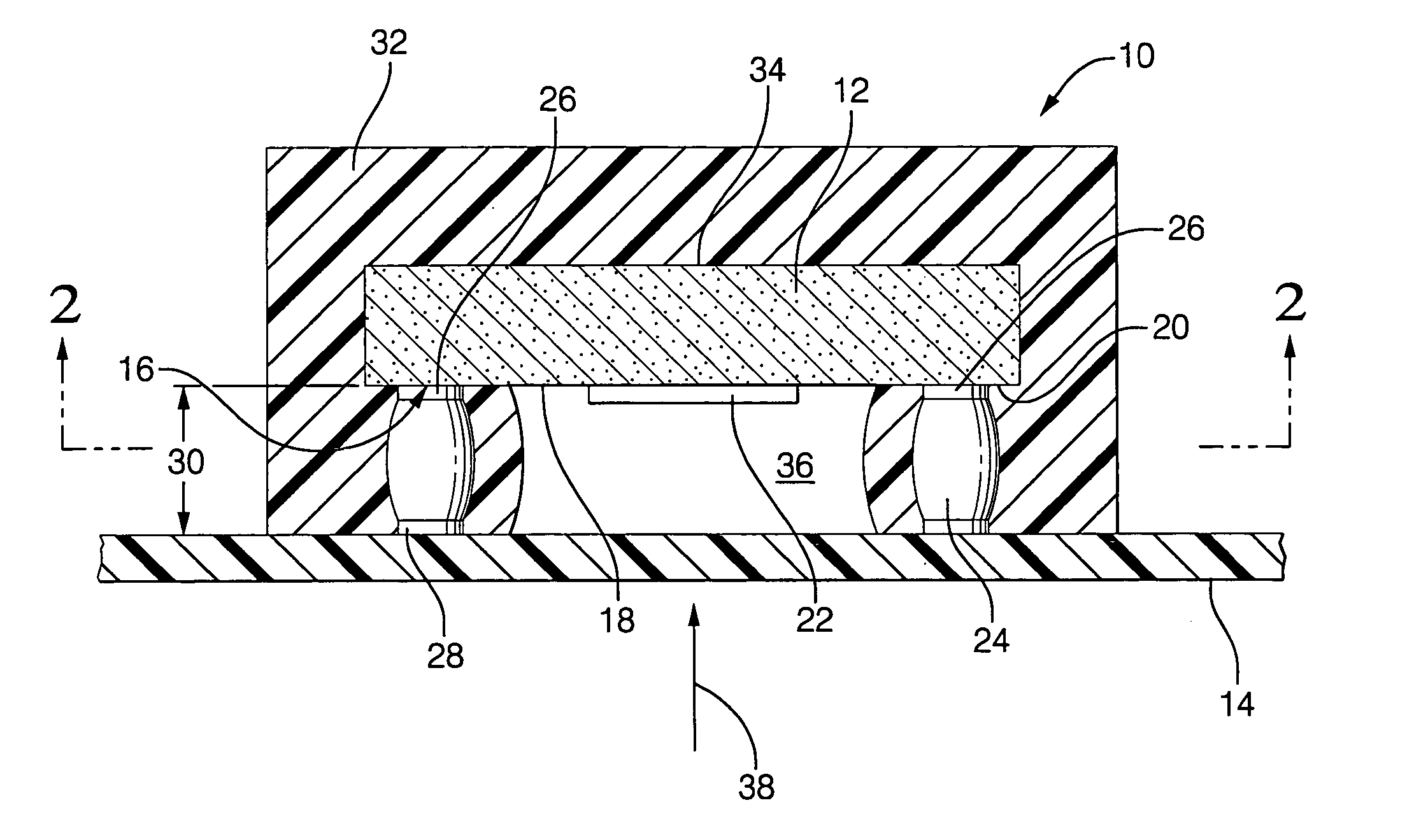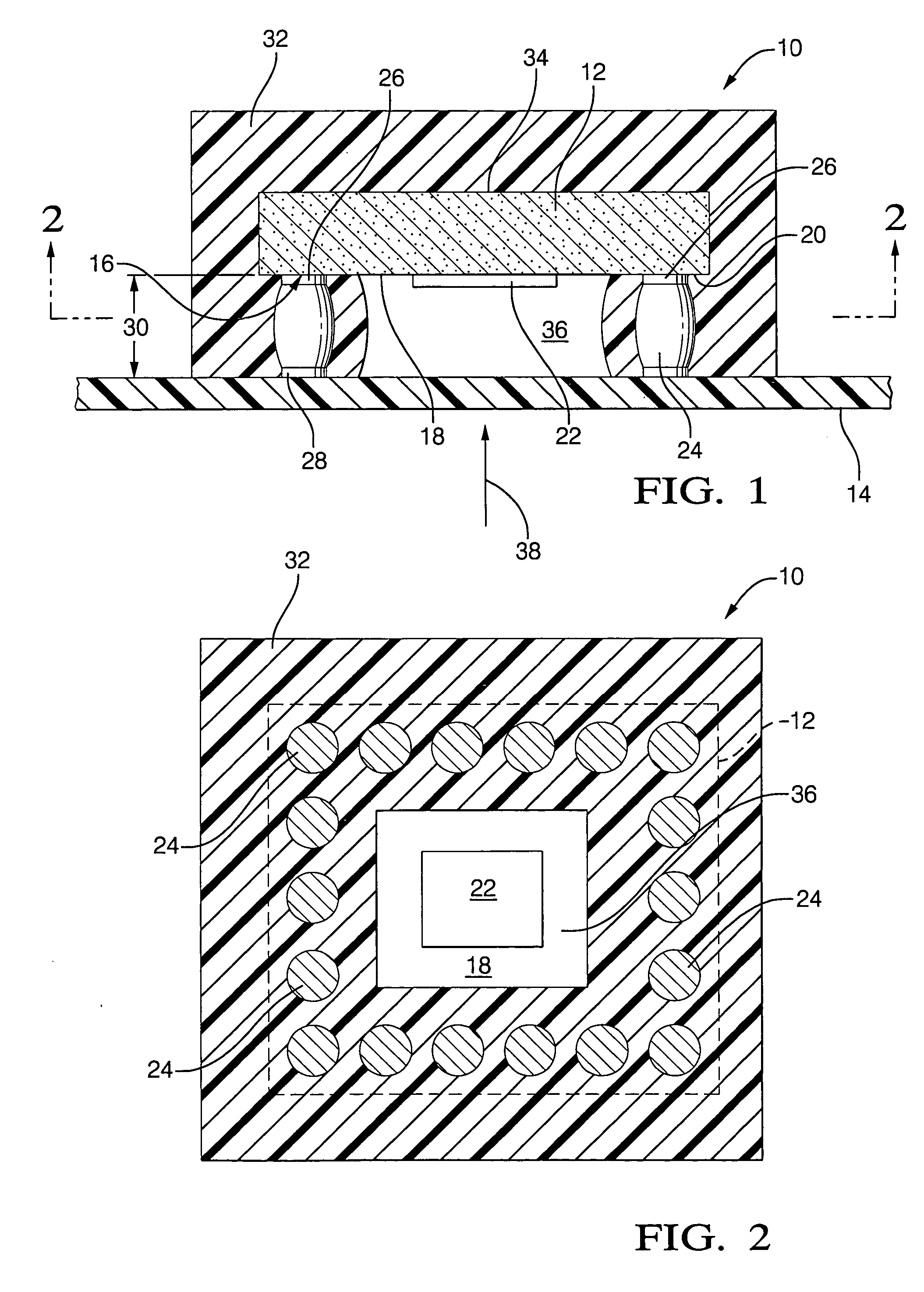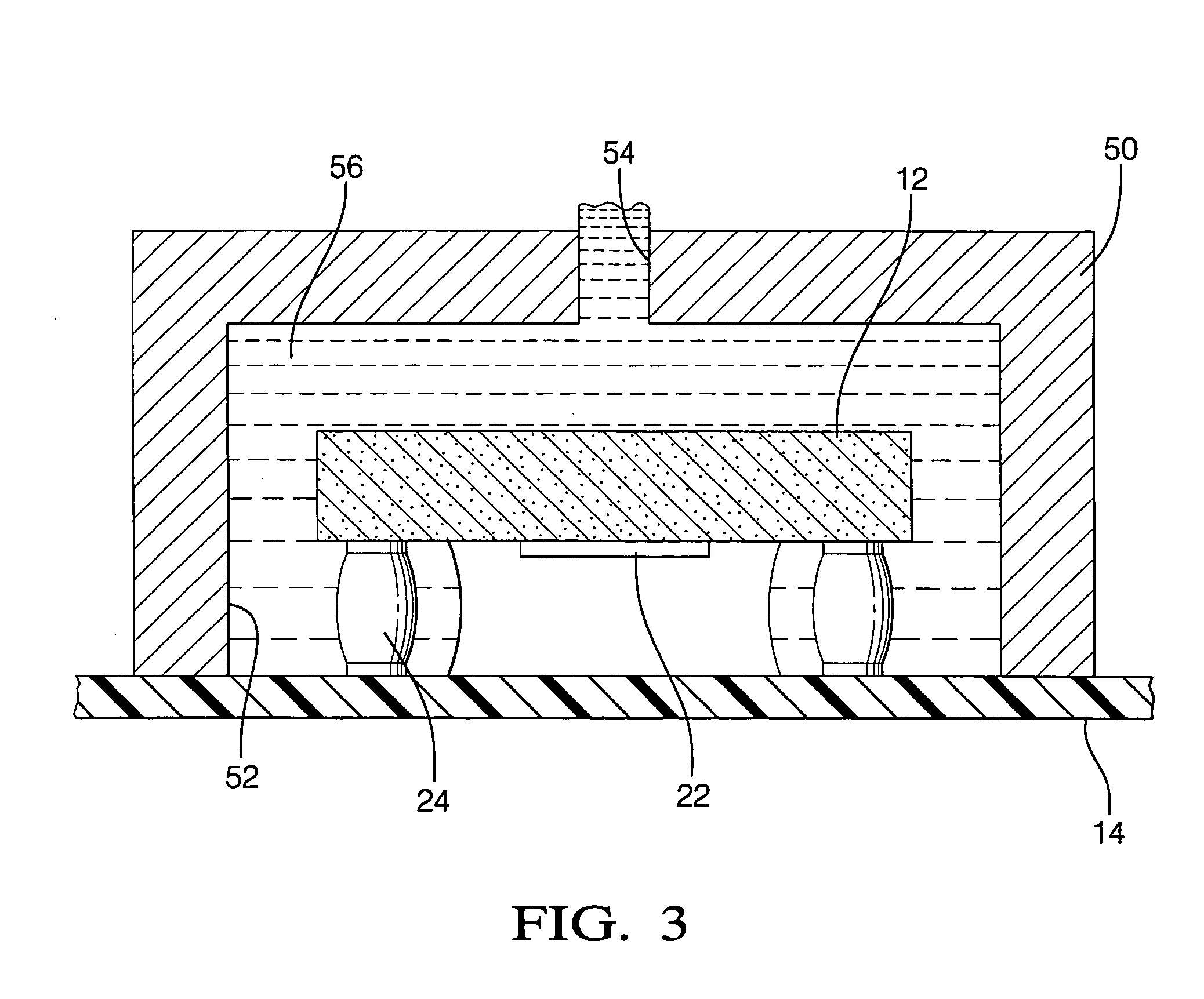Microelectronic assembly with underchip optical window, and method for forming same
- Summary
- Abstract
- Description
- Claims
- Application Information
AI Technical Summary
Benefits of technology
Problems solved by technology
Method used
Image
Examples
Embodiment Construction
[0013] In accordance with a preferred embodiment of this invention, referring to FIGS. 1 and 2, a microelectronic assembly 10 comprises an integrated circuit die 12 mounted onto a substrate 14 in a flip chip arrangement. Substrate 14 is formed of a transparent material. A preferred material is glass. Alternately, the substrate may be formed of a polymeric thin film or a polymer glass laminate, such as an FR4 board. Die 12 is formed of a semiconductor material, preferably silicon, and comprises an active face 16 that includes a central region 18 surrounded by a perimeter region 20. An optical feature 22 is formed on the active face at the central region. In a preferred embodiment, die 12 may be an digital imaging device that includes, as feature 22, an array of optical sensors and related circuitry for sensing and processing light to produce an image, such as a digital picture. Alternately, feature 22 may be detector for receiving an optical signal, or an element for emitting an opti...
PUM
 Login to View More
Login to View More Abstract
Description
Claims
Application Information
 Login to View More
Login to View More - R&D
- Intellectual Property
- Life Sciences
- Materials
- Tech Scout
- Unparalleled Data Quality
- Higher Quality Content
- 60% Fewer Hallucinations
Browse by: Latest US Patents, China's latest patents, Technical Efficacy Thesaurus, Application Domain, Technology Topic, Popular Technical Reports.
© 2025 PatSnap. All rights reserved.Legal|Privacy policy|Modern Slavery Act Transparency Statement|Sitemap|About US| Contact US: help@patsnap.com



